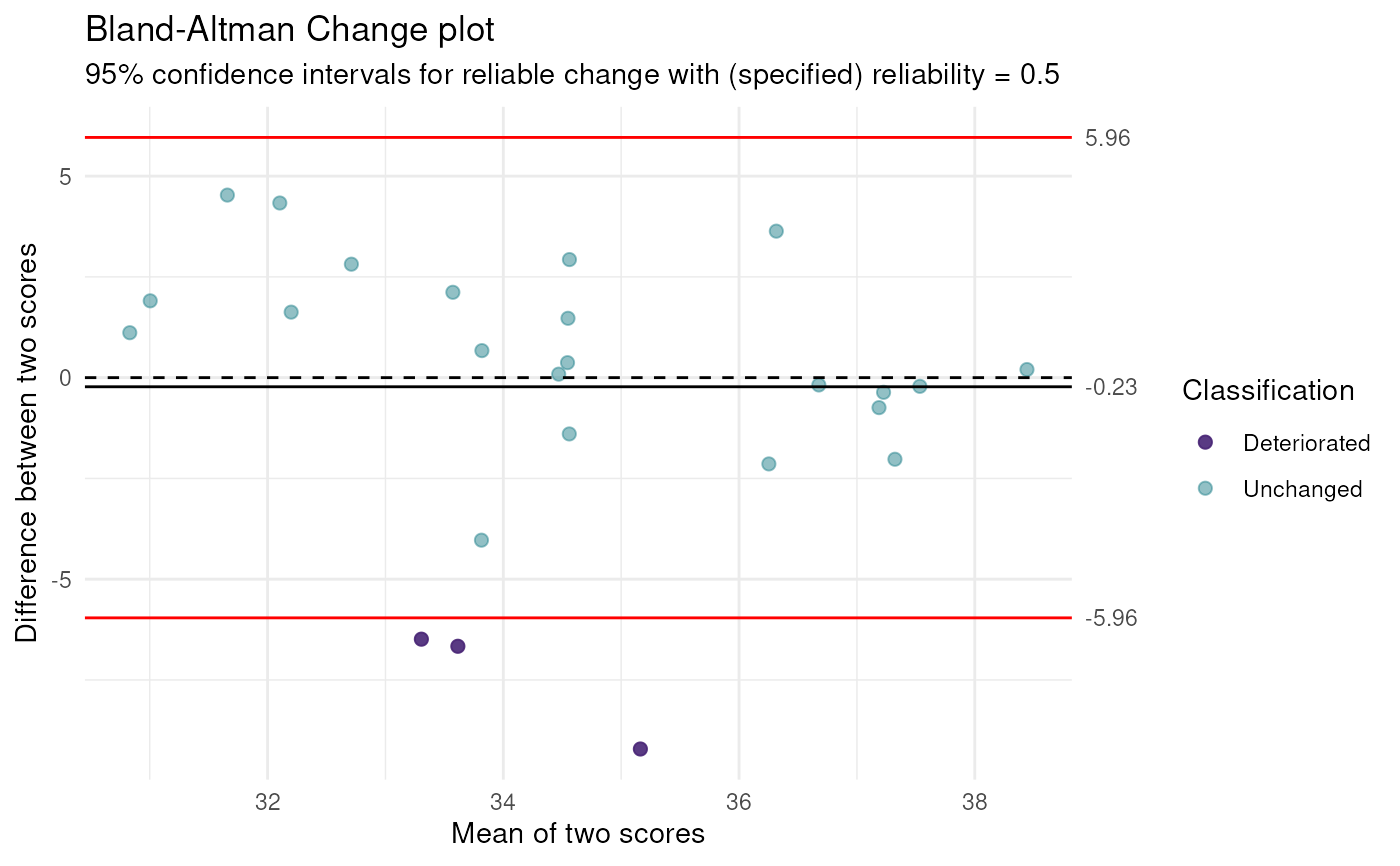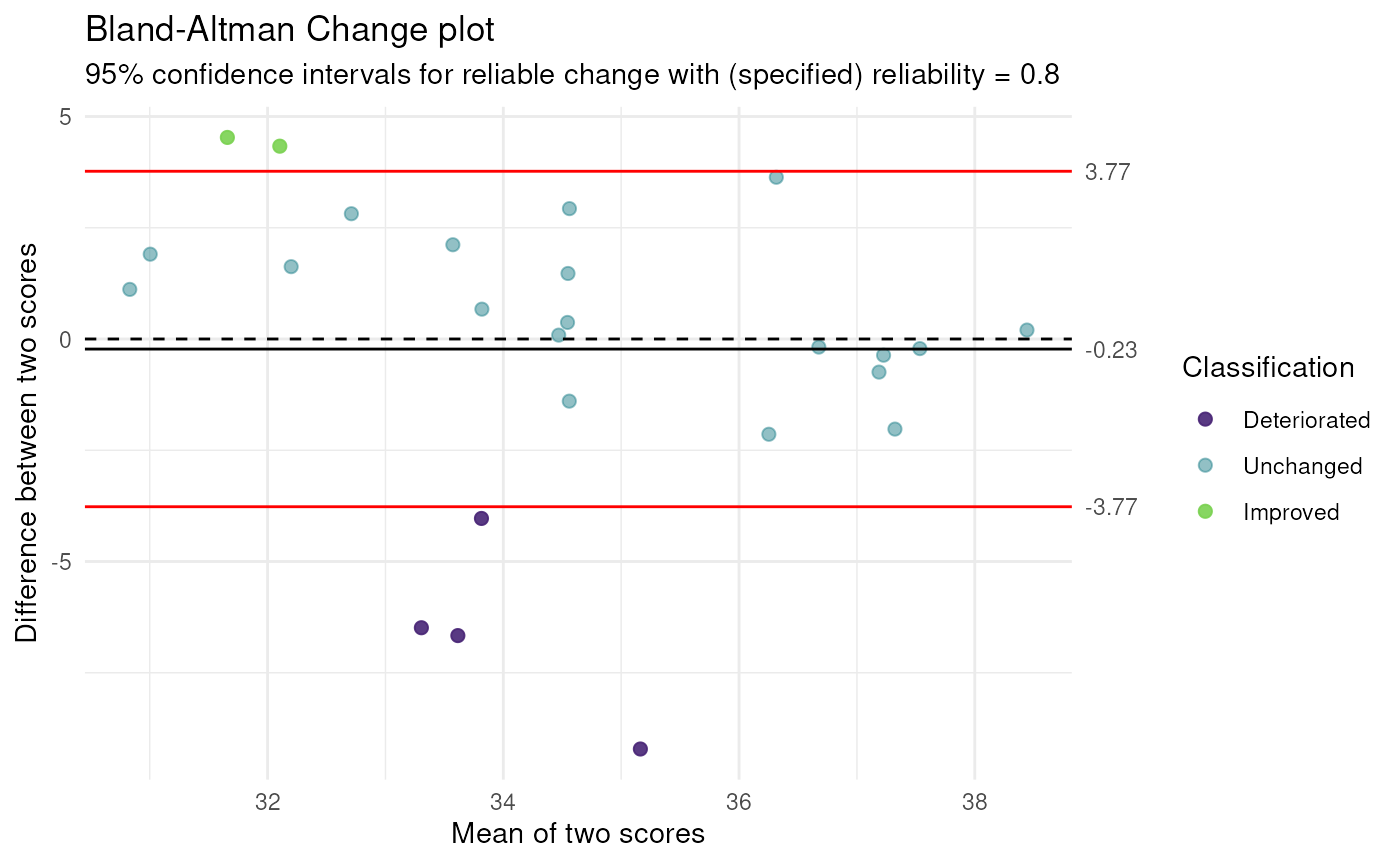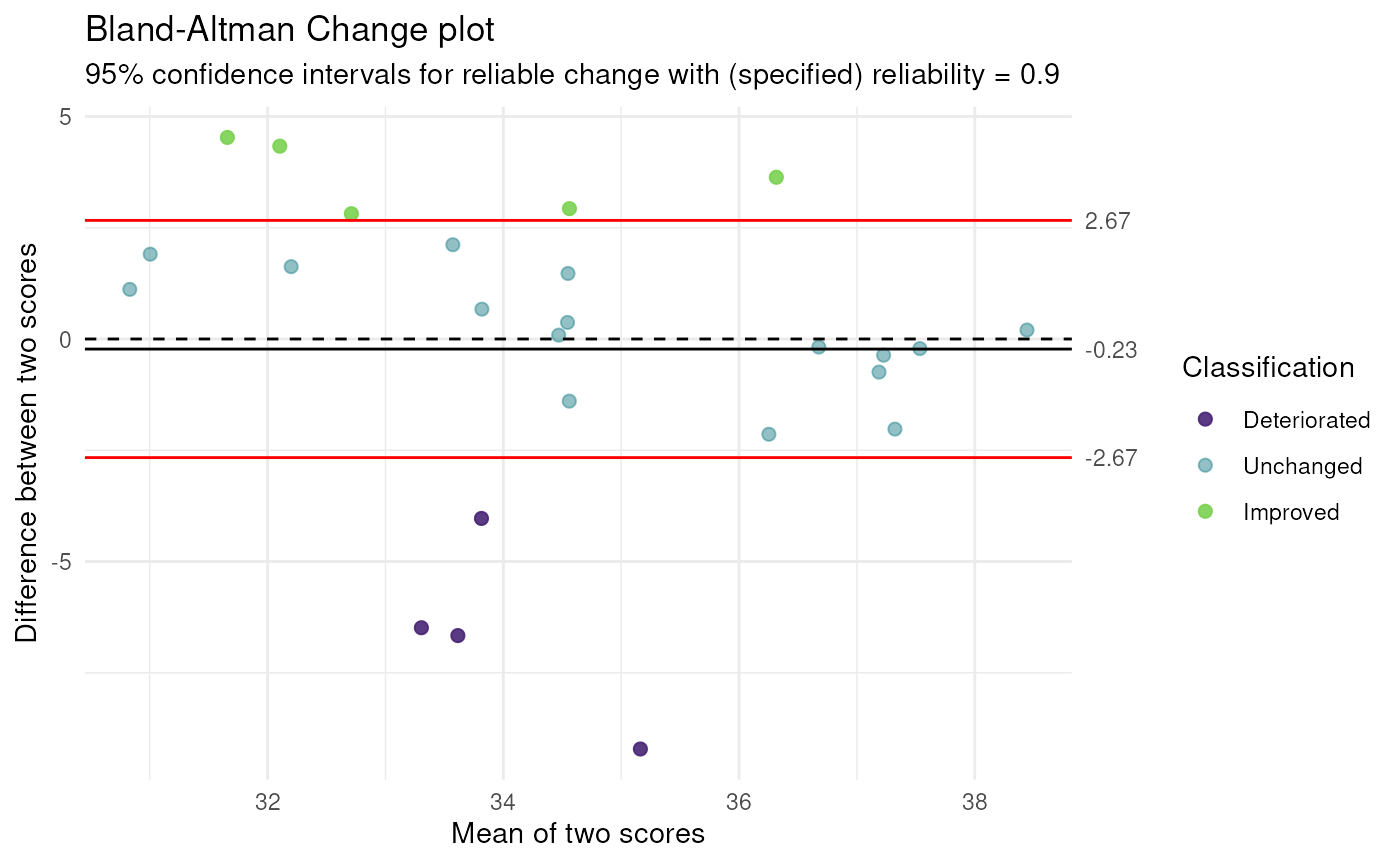Bland-Altman Change plot
BAC_plot(
data,
cols = names(data),
reliability = NULL,
pointSize = 2,
deterioratedColor = "#482576E6",
unchangedColor = "#25848E80",
improvedColor = "#7AD151E6",
zeroLineColor = "black",
zeroLineType = "dashed",
ciLineColor = "red",
ciLineType = "solid",
conf.level = 0.95,
theme = ggplot2::theme_minimal(),
ignoreBias = FALSE,
iccFromPsych = FALSE,
iccFromPsychArgs = NULL
)Arguments
- data
The data frame; if it only has two columns, the first of which is the pre-change column,
colscan be left empty.- cols
The names of the columns with the data; the first is the column with the pre-change data, the second the column after the change.
- reliability
The reliability estimate, for example as obtained with the
ICC()function in thepsych()package; can be omitted, in which case the intraclass correlation is computed.- pointSize
The size of the points in the plot.
- deterioratedColor, unchangedColor, improvedColor
The colors to use for cases who deteriorate, stay the same, and improve, respectively.
- zeroLineColor, ciLineColor
The colors for the line at 0 (no change) and at the confidence interval bounds (i.e. the point at which a difference becomes indicative of change given the reliability), respectively.
- zeroLineType, ciLineType
The line types for the line at 0 (no change) and at the confidence interval bounds (i.e. the point at which a difference becomes indicative of change given the reliability), respectively.
- conf.level
The confidence level of the confidence interval.
- theme
The ggplot2 theme to use.
- ignoreBias
Whether to ignore bias (i.e. allow the measurements at the second time to shift upwards or downwards). If
FALSE, the variance associated with such a shift is considered error variance (i.e. 'unreliability').- iccFromPsych
Whether to compute ICC using the
psych::ICC()function or not.- iccFromPsychArgs
If using the
psych::ICC()function, the arguments to pass.
Value
A ggplot2 plot.
Examples
### Create smaller dataset for example
dat <-
ufs::testRetestSimData[
1:25,
c('t0_item1', 't1_item1')
];
ufs::BAC_plot(dat, reliability = .5);
 ufs::BAC_plot(dat, reliability = .8);
ufs::BAC_plot(dat, reliability = .8);
 ufs::BAC_plot(dat, reliability = .9);
ufs::BAC_plot(dat, reliability = .9);
